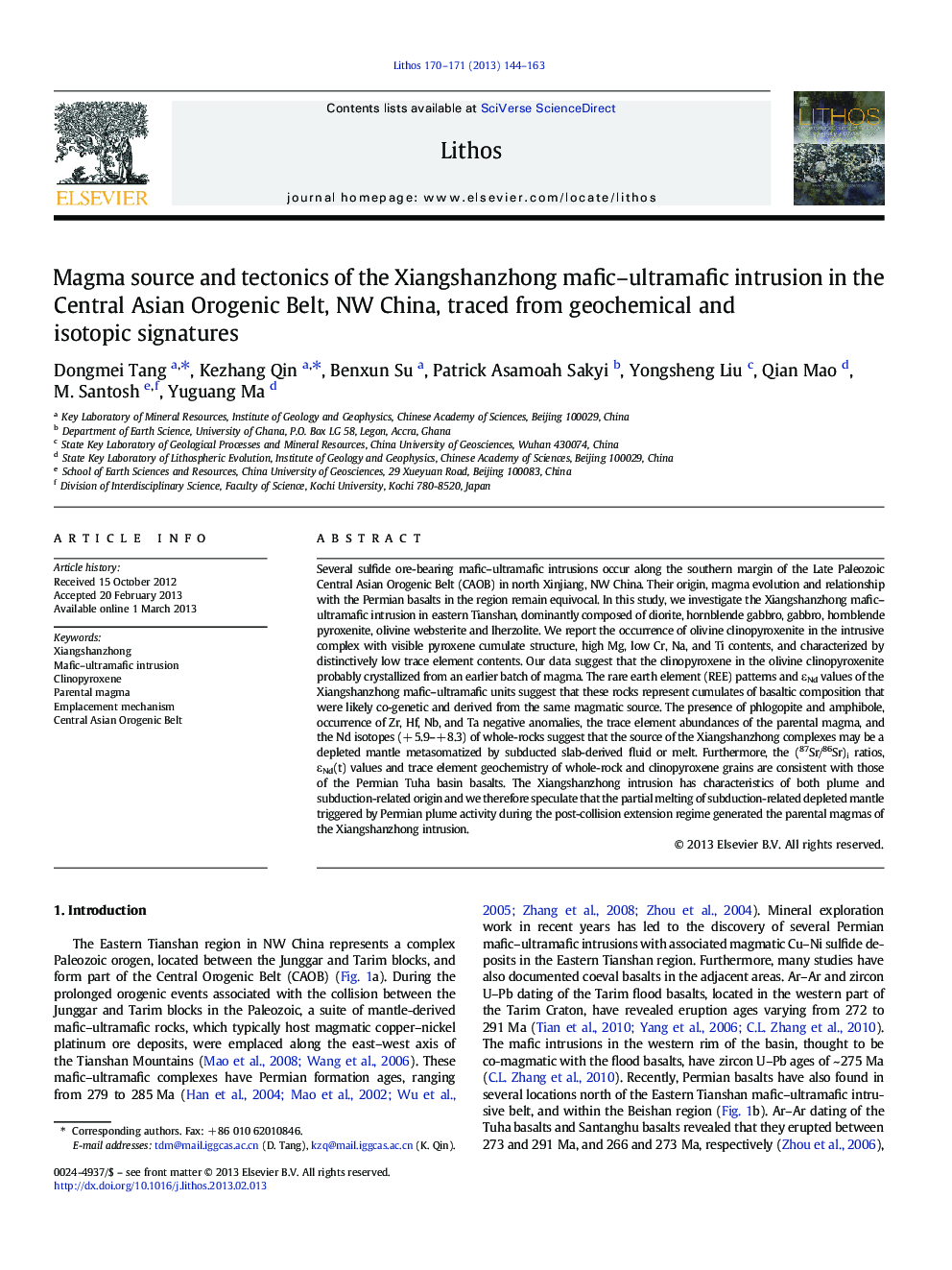| کد مقاله | کد نشریه | سال انتشار | مقاله انگلیسی | نسخه تمام متن |
|---|---|---|---|---|
| 4716236 | 1638692 | 2013 | 20 صفحه PDF | دانلود رایگان |

• We discovered earlier crystal pyroxene cumulated olivine clinopyroxenite.
• Depletion of Nb and Ta in magmatic source is related to subduction slab metasomatism.
• Sr–Nd isotopic and trace element geochemistry are similar with Tuha basalts.
• We propose partial melting of subducted-related depleted mantle caused by plume model.
Several sulfide ore-bearing mafic–ultramafic intrusions occur along the southern margin of the Late Paleozoic Central Asian Orogenic Belt (CAOB) in north Xinjiang, NW China. Their origin, magma evolution and relationship with the Permian basalts in the region remain equivocal. In this study, we investigate the Xiangshanzhong mafic–ultramafic intrusion in eastern Tianshan, dominantly composed of diorite, hornblende gabbro, gabbro, hornblende pyroxenite, olivine websterite and lherzolite. We report the occurrence of olivine clinopyroxenite in the intrusive complex with visible pyroxene cumulate structure, high Mg, low Cr, Na, and Ti contents, and characterized by distinctively low trace element contents. Our data suggest that the clinopyroxene in the olivine clinopyroxenite probably crystallized from an earlier batch of magma. The rare earth element (REE) patterns and εNd values of the Xiangshanzhong mafic–ultramafic units suggest that these rocks represent cumulates of basaltic composition that were likely co-genetic and derived from the same magmatic source. The presence of phlogopite and amphibole, occurrence of Zr, Hf, Nb, and Ta negative anomalies, the trace element abundances of the parental magma, and the Nd isotopes (+ 5.9–+ 8.3) of whole-rocks suggest that the source of the Xiangshanzhong complexes may be a depleted mantle metasomatized by subducted slab-derived fluid or melt. Furthermore, the (87Sr/86Sr)i ratios, εNd(t) values and trace element geochemistry of whole-rock and clinopyroxene grains are consistent with those of the Permian Tuha basin basalts. The Xiangshanzhong intrusion has characteristics of both plume and subduction-related origin and we therefore speculate that the partial melting of subduction-related depleted mantle triggered by Permian plume activity during the post-collision extension regime generated the parental magmas of the Xiangshanzhong intrusion.
Journal: Lithos - Volumes 170–171, June 2013, Pages 144–163